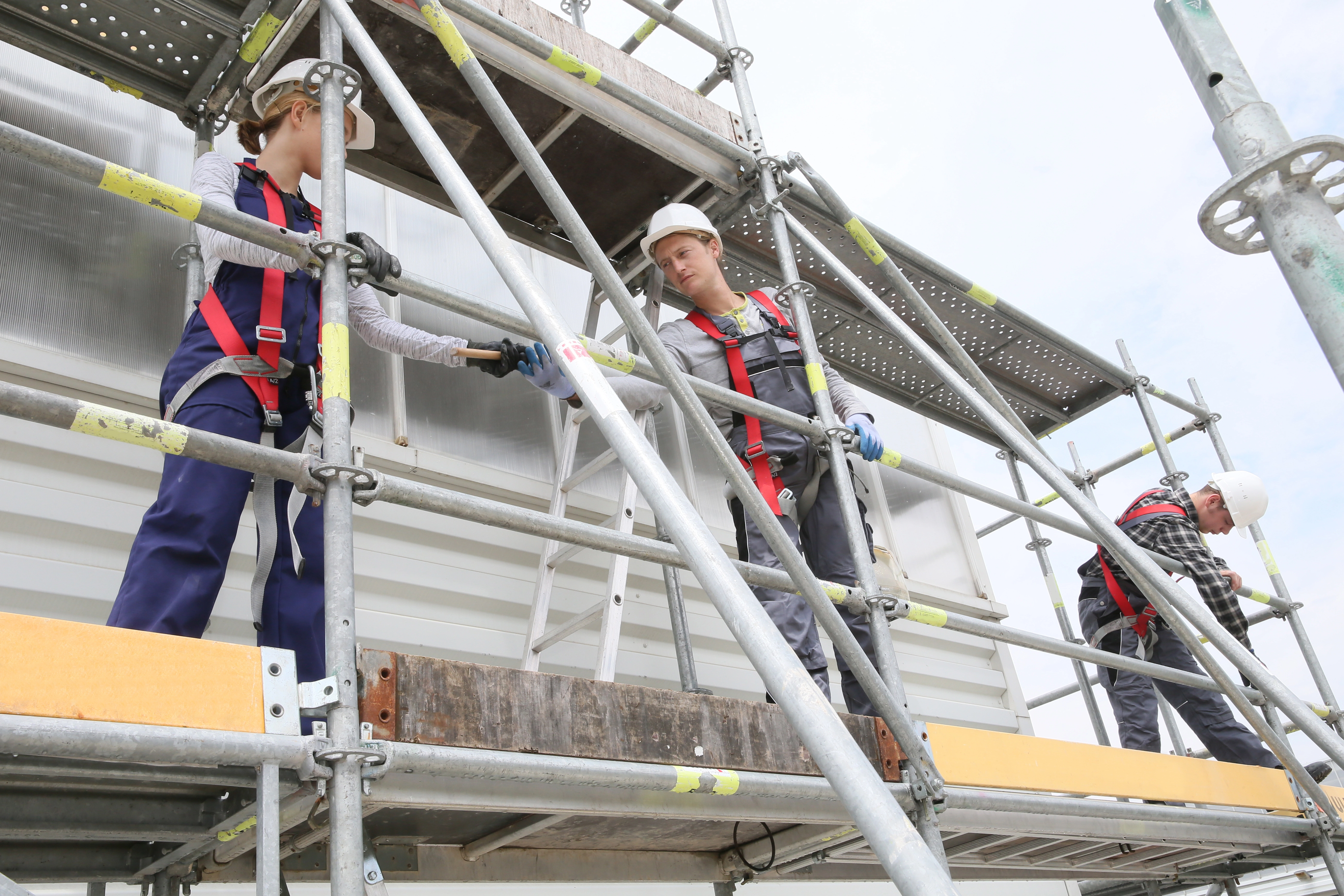4 Concerns With Scaffolding
Scaffolding can improve productivity and safety at your job site, but only if it is set up properly. Acuity's loss control team came up with four tips to address some common concerns they see with scaffolding.
January 3, 2024
|

Scaffolding can improve productivity and safety at your job site, but only if it is set up properly. Acuity's loss control team came up with four tips to address some common concerns they see with scaffolding.
- Start with good base. The foundation that the scaffolding poles, legs, posts, frames, and uprights rest on must be stable and level. Concrete blocks should not be used as a base because they could crush under the weight of the scaffolding, materials, and workers. Since you may not be able to set up on a sidewalk, parking lot, or other solid surface, you should use base plates and/or mud sills.
- Make sure components are compatible. When setting up and taking down the scaffolding, it’s best to be systematic. This will help make sure all scaffolding parts are accounted for, organized, and there when it’s time to set up the scaffolding again. You must use the scaffolding as designed by the manufacturer. If you lose a piece, you will need to order a proper replacement part. Using a make-shift part or a component from another type/brand of scaffolding can lead to an unsafe workplace.
- Adequate access is a must! Adequate access means that you need a safe way to get on and off the scaffolding. You need a ladder, stair tower, ramp, or other prefabricated built-in component. Climbing on the cross bars is not an option.
- The working area should be fully planked. There should be adequate planks or decking covering the entire working area from front to back and side to side. Working on a partially planked platform significantly increases the chance of a worker falling.
In addition, make sure you are complying with all OSHA requirements for scaffolding. To help ensure that everything is safe, a competent person must inspect the scaffolding before each work shift and after any situation that might affect the structural integrity of the scaffolding. OSHA explains these and other requirements in their eTool.
An insurance company that cares about you and insuring the things you wish to be insured.
Get a Quote> Find an Agent>